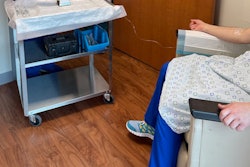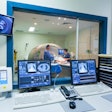Diagnostic errors, including those from radiology among hospitalized adults who died or were transferred to the intensive care unit (ICU), are common, according to a study published January 8 in JAMA Internal Medicine.
Researchers led by Andrew Auerbach, MD, from the University of California, San Francisco found that a missed or delayed diagnosis took place in 23% of patients in their study, with 17% of these errors causing temporary or permanent harm to patients. Such errors included delayed ordering of a CT angiogram (CTA) and incorrect management of abdominal CT findings.
“Problems with choosing and interpreting tests and the processes involved with clinician assessment are high-priority areas for improvement efforts,” Auerbach and co-authors found.
While it may seem obvious that diagnostic errors add to patient harm, the researchers noted that little data exists describing the prevalence, underlying cause, and harms of such errors.
Auerbach and colleagues added to the literature, focusing on these data points for their study among hospitalized adults transferred to an ICU or who died. They included data from 2,428 patients with an average age of 63.9 years in 29 hospitals.
The team reported that of the total, 550 patients (23%) had experienced a diagnostic error. These errors were deemed to have contributed to temporary harm, permanent harm, or death in 436 of the total patients (17.8%). Among the 1,863 patients who died, diagnostic error was deemed to have played a role in 121 patients (6.6%).
In one case, a CTA was not ordered until the morning after a patient presented admitted with a left psoas hematoma following bone marrow biopsy. It also took nine hours after ordering the exam until the CTA was finally performed. The exam revealed active extravasation, necessitating interventional radiology care.
In another case, a patient presented with hypoxemia and abdominal pain after a diagnostic hysteroscopy by gynecology service. An abdominal CT exam showed free air, thought by the gynecology consultant to be due to benign uterine perforation. However, the patient’s condition got worse, with a surgical team diagnosing a small bowel perforation.
The researchers also analyzed process faults tied to any diagnostic error, using adjusted proportion attributable fraction (aPAF) for measuring. They found that patient assessment problems (aPAF, 21.4%) and problems with test ordering and interpretation (aPAF, 19.9%) had the highest opportunity to reduce diagnostic errors.
The study authors suggested that testing problems and clinical assessment gaps could be target areas to mitigate missed or delayed diagnoses. They added that informatics tools such as alerts or predictive models, as well as evaluation of physician workload, could aid in this goal.
“Emergence of AI and large language models hold promise through their ability to gather and synthesize complex data necessary to make an accurate and timely diagnosis,” the authors wrote.
The full study can be found here.



















